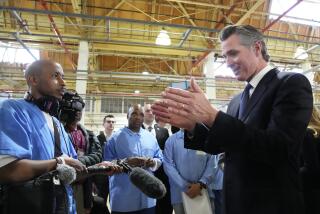Prisons Won’t Do It
- Share via
The California prison population--already at record levels--will climb to more than twice its designed capacity by 1995, despite an aggressive construction program. Clearly, there is more to the problem than new cells.
The forecast, prepared by the state Department of Corrections for Sen. Robert Presley (D-Riverside), doesn’t identify the cause of the surge in inmates, but law enforcement and public health experts lay much of the blame on drugs.
Nationally, 70% of men arrested for serious crimes test positive for drug use, according to a recent U.S. Justice Department survey. In Los Angeles, 75% of the inmates of the overcrowded county jail system are there for drug-related crimes, according to Los Angeles County Sheriff Sherman Block.
The drug problem gets worse, and yet hard-core users who seek help in Los Angeles County must wait for nearly six months to get into intensive in-patient programs that include day-to-day monitoring and detoxification.
Expanded drug-treatment programs--like more bunks in prisons--cost money. The county at present spends about $25 million a year on drug treatment, which will cover treatment for about 5,000 people, far short of actual need.
The federal government provides 48% of the money for the county drug-treatment programs. The state provides 42% of the financing. The county provides the remaining 10%. Getting more money out of any of those tight budgets for drug-treatment programs or prisons is difficult.
As more inmates are crammed into more prisons, there are more demands for more cells. That they are needed cannot be questioned, no matter what they cost and how difficult it is to find land to put them on. But it should be clear by now that additional drug treatment programs are at least as important as more cells and, perhaps, in the long run, more important.
More to Read
Sign up for Essential California
The most important California stories and recommendations in your inbox every morning.
You may occasionally receive promotional content from the Los Angeles Times.













